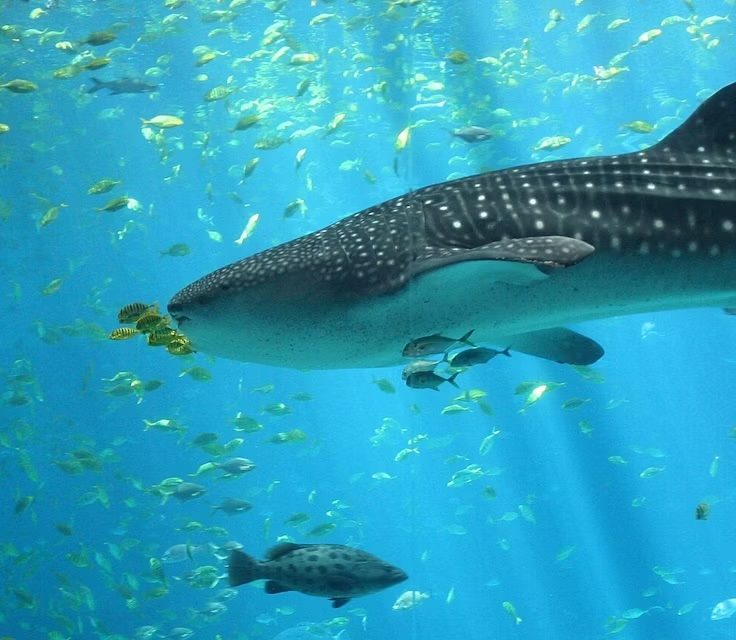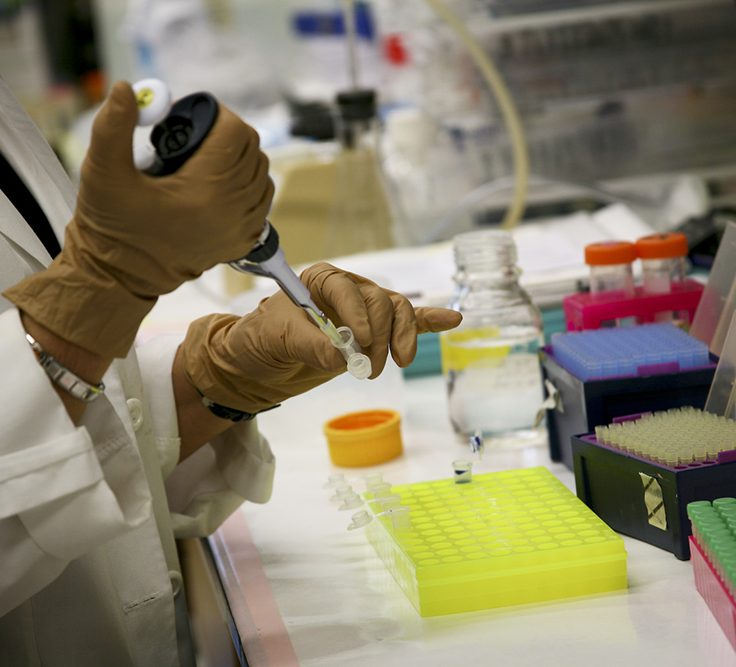
Three peculiar sea creatures could reshape human dentistry
Gareth Fraser's research could be the next step in human evolution, at least for our teeth
What could the ocean’s most bizarre creatures possibly have in common with humans? Evolutionary biologist Gareth Fraser is on a quest to find out. He leads research at the Fraser Lab, where his team investigates marine fish anatomy to uncover how their peculiarities could be leveraged for human benefits, particularly in the realm of dentistry.
“Humans only get two sets of teeth: one set that develops while we’re babies and the larger set that replaces it later in childhood — then that’s it,” Fraser explained. “Many fish, however, are able to regenerate their teeth throughout their lives, so the question is if there’s a way we could trigger that regeneration in humans.”
Fraser has always had a penchant for the unconventional in marine biology, focusing on studying the peculiar creatures that often escape widespread scientific and media attention. His latest research spotlights three extraordinary subjects — the hammerhead shark, the ghost shark, and the pufferfish — showcasing his fascination with the weird and bizarre.
Tooth & Nail
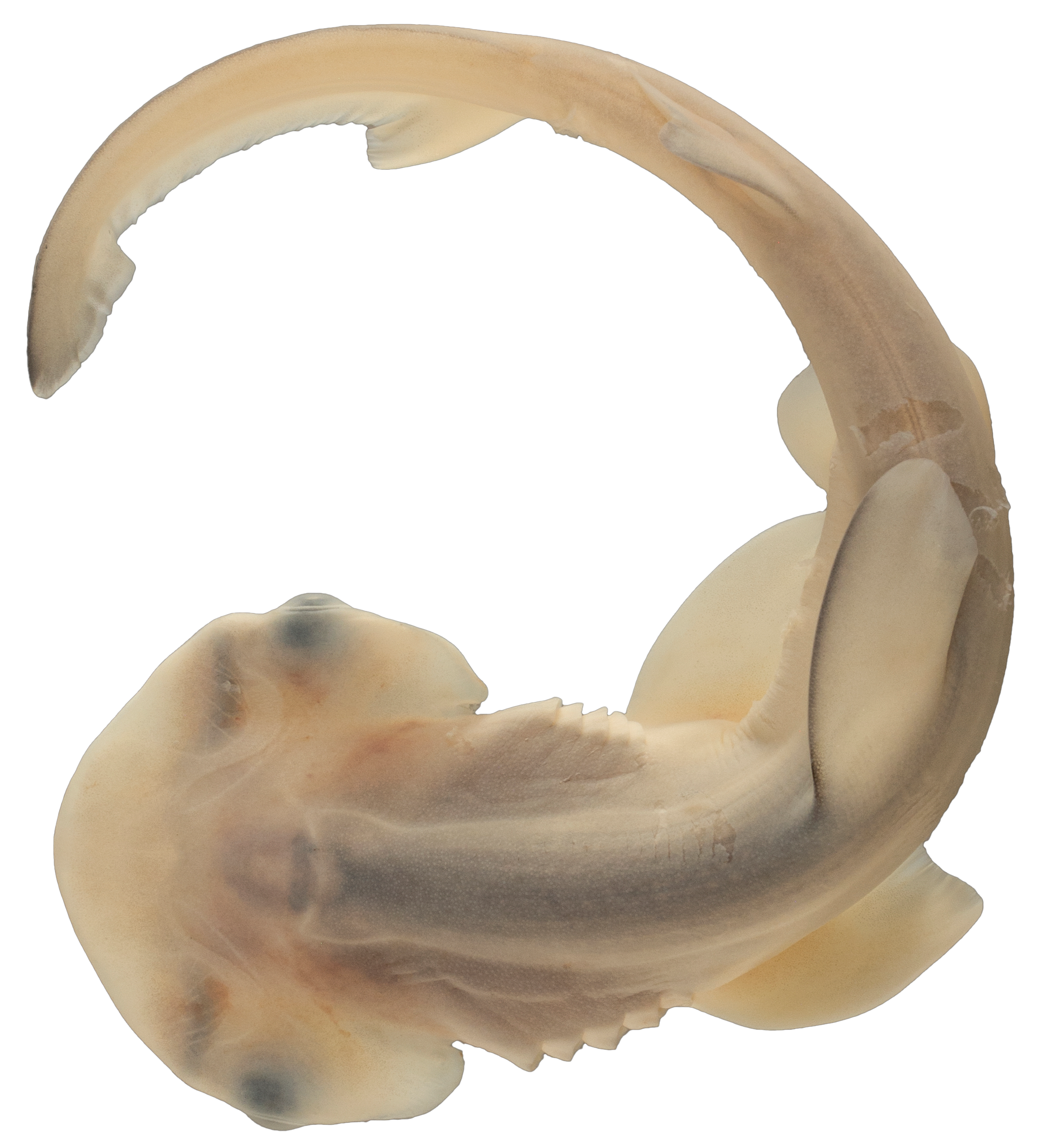
Hammerhead sharks, known for their distinctive heads and advanced olfactory and electrical sensing abilities, are evolving with gradually shrinking heads. Scientists have identified the bonnethead, a smaller species within the hammerhead family, as the latest evolutionary development in this line.
Just recently, Fraser and his team made a major breakthrough in their work with bonnethead embryos, pinpointing the stage where their heads transform into the iconic hammer shape. These unprecedented findings have captivated the wider scientific community, giving insight into the development of a wonder of nature. Fraser plans to use contemporary genetic methods to further unravel the mechanisms and gene networks governing the head shape formation, presenting a pivotal case study on species adaptation.
Beyond head shape and evolutionary history, Fraser finds hammerheads intriguing for their teeth, which are present both inside their mouths and on their skin. Most animals have teeth exclusively in their mouths and use them to chew their food, but sharks have teeth all over their bodies. They forgo scales like most fish for skin covered in tiny enamel and dentine-rich teeth. As sharp and jagged as the teeth in their mouths, these denticles, known as “skin teeth,” create patterns on sharks’ skin. These patterns improve hydrodynamics and reduce drag while swimming.
The regenerative nature of these skin teeth sets them apart. Teeth in their mouths undergo constant regeneration, which involves pushing out even healthy ones when new teeth in the ‘conveyor-belt’ form. This explains the common discovery of well-preserved shark teeth on beaches and the seafloor. Teeth on the skin, however, only regenerate when necessary, typically after serious injuries. This disparity in regeneration patterns is a key focus of Fraser’s shark investigation.
Fraser notes that mimicking sharks’ continuous oral tooth production for human genes could be risky. The process of perpetually pushing out old teeth, regardless of wear and tear, could potentially lead to complications. Instead, he sees promise in exploring the selective and controlled regeneration of skin teeth for advancements in tooth regeneration research.
“Cells that constantly regenerate without limits can risk creating tumors,” Fraser said. “Regeneration only when needed is much more appealing and likely much safer.”
Ghostly Grins
Despite its misleading name, the ghost shark is neither a specter nor a shark but is actually a member of the order Chimaeriformes, colloquially known as chimaeras. They are closely related to sharks and rays, all falling under the same group of cartilaginous fishes, chondrichthyes. Inhabiting deep waters worldwide, these elusive creatures are difficult to study due to the harsh conditions of the ocean depths. Yet, as some of the oldest living fish, unlocking the secrets of their teeth could significantly impact tooth research across all vertebrates.
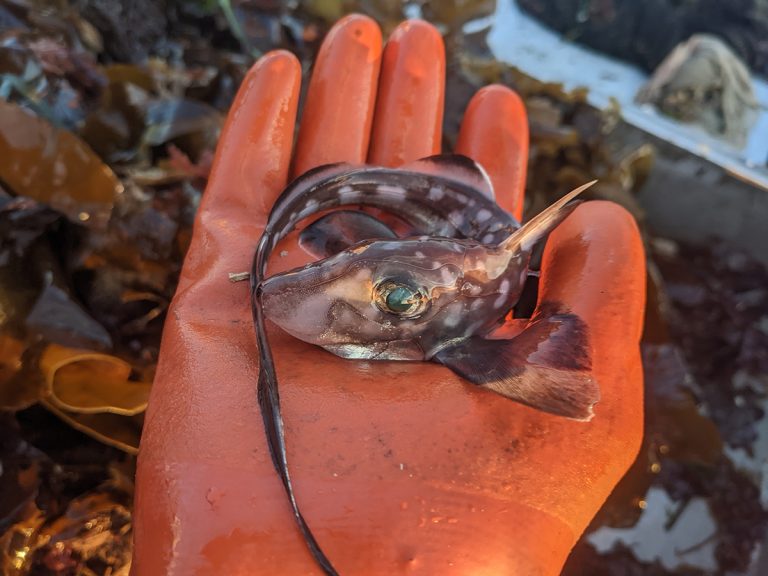
Fraser is no stranger to these fish, standing out as one of the few researchers to not only swim alongside them but also experience an encounter of a more aggressive nature. During the past summer, with the help of a National Science Foundation grant, researchers from the Fraser Lab and the Seattle Aquarium ventured to the San Juan Islands, in the Pacific Northwest.
This area is one of the few known spots where ghost sharks migrate to shallower waters to breed, meaning that in addition to using remotely operated underwater vehicles (ROVs) to study these fish, Fraser got a rare opportunity to swim alongside them. While diving, he had a close encounter with one ghost shark that approached him, brandishing a spine in front of its dorsal fin in a threatening way.
“They are venomous, but no threat to us,” Fraser explained, “however, getting stabbed is not a pleasant experience, and could lead to an infection.”
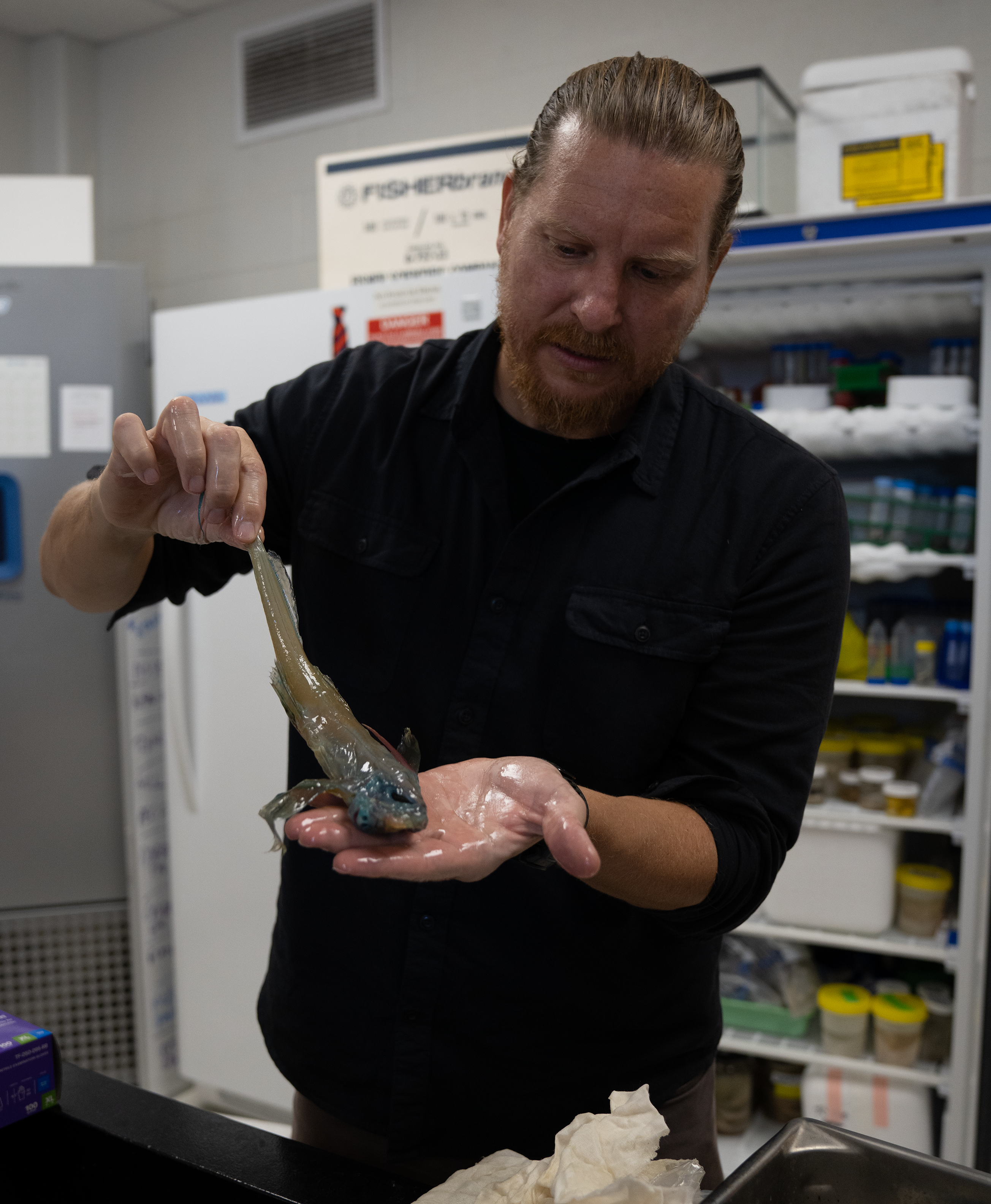
Ghost shark teeth, with six tooth plates designed for grinding instead of tearing food, have earned the creatures nicknames such as “ratfish” or “rabbitfish” due to their rodentlike appearance. These tooth plates continuously regenerate, similar to shark teeth.
Unlike most sharks, ghost sharks have few denticles on their relatively naked skin. Instead, they have teeth concentrated in a specific area of their forehead, forming a bizarre defense mechanism. Apart from its dorsal fin spike, the ghost shark boasts a fleshy, retractable clublike appendage on its forehead, akin to a unicorn horn. This appendage, with pointed teeth at the tip resembling oral shark teeth, serves as a defensive tool or copulatory aid. This odd set of teeth holds potential for translating these developmental processes to human dentistry.
Bite Sized
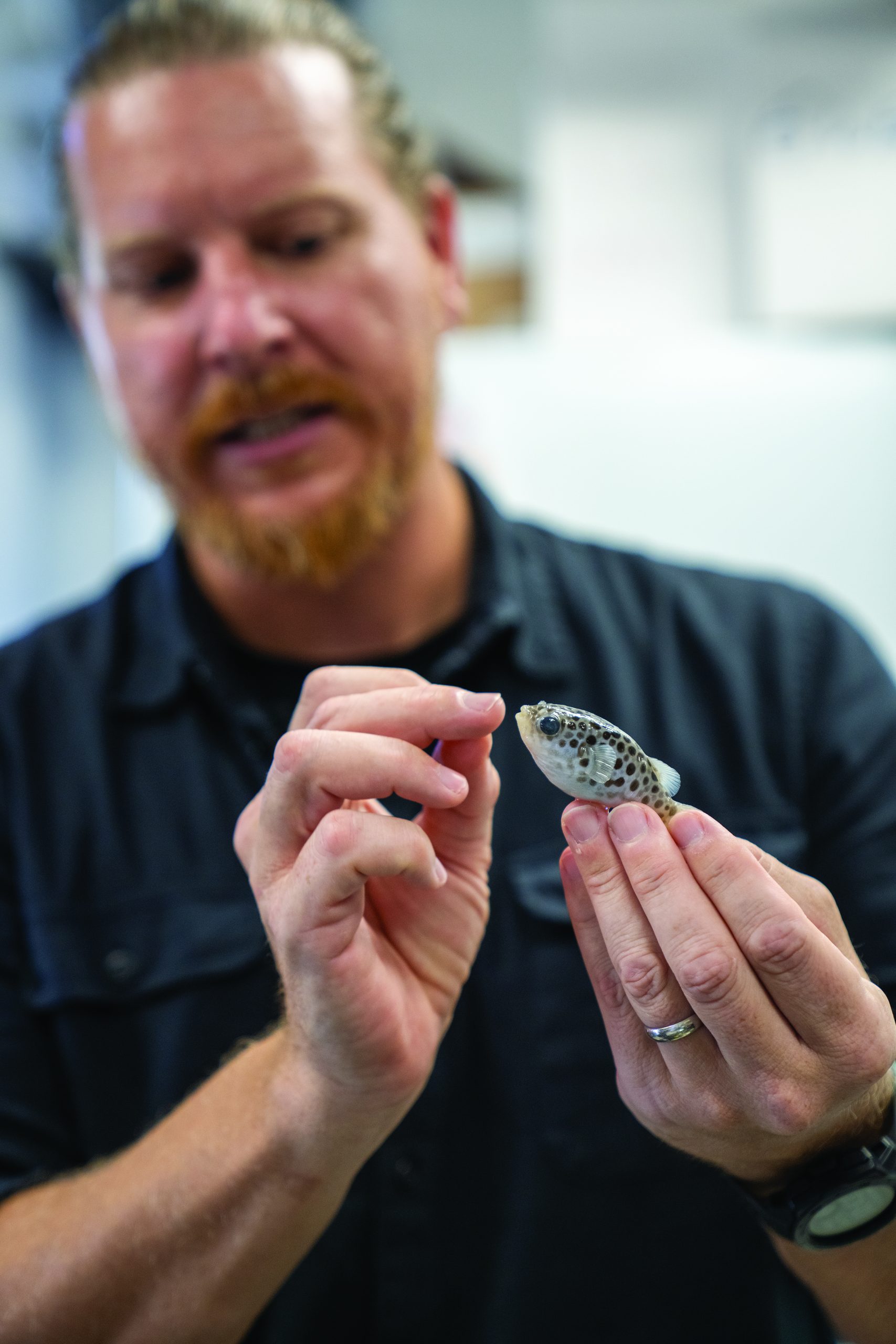
Among the three key species in Fraser’s research, the pufferfish may seem less peculiar at first glance. It’s probably best known for its main defense mechanism of expanding its body up to three times its size, and the coverage of skin spines, to deter predators.
While most fish sport the typical dental ensemble of multiple rows, the pufferfish rebels with its own style. It possesses four teeth in total, two on top and two on the bottom jaw, located prominently at the front of its mouth. These teeth fuse together into an unusual bird-like beak, a rarity among vertebrates.
The pufferfish’s beaked dentition undergoes a remarkable developmental transformation, playing a crucial role in Fraser’s work. In their juvenile phase, these fish sport relatively normal-looking teeth, but studying them outside the lab is challenging due to their small size. The Fraser Lab collects tiny embryos from Japan and here in Florida, barely the size of a grain of sand. Microscopes are required to study their teeth before they form into beaks.
The transformation occurs when their first set of teeth are replaced, leaving only four remaining teeth to regenerate and fuse, and further regeneration leads to the formation of their characteristic beak. This more selective regeneration may help avoid the previously mentioned risk of tumors associated with constant cell regeneration.
“If we were to apply these regeneration mechanisms to humans, we would want to be able to switch them on and off,” Fraser said. “If the genes in pufferfish can regulate and limit regeneration to just those four teeth, perhaps we could use that to target only specific teeth in humans.”
More Fish in the Sea
Fraser and his lab frequently acquire new species to study, continuing their observations to learn more about these wonderfully diverse sea creatures. Their main goal is to unravel the mysteries behind these creatures’ diverse teeth and the genes that control them.
“By understanding how these unusual masters of tooth regeneration make and reproduce their dentition, we might perhaps be able to transfer this knowledge to improve dental therapies and create next-generation teeth in humans,” Fraser said.
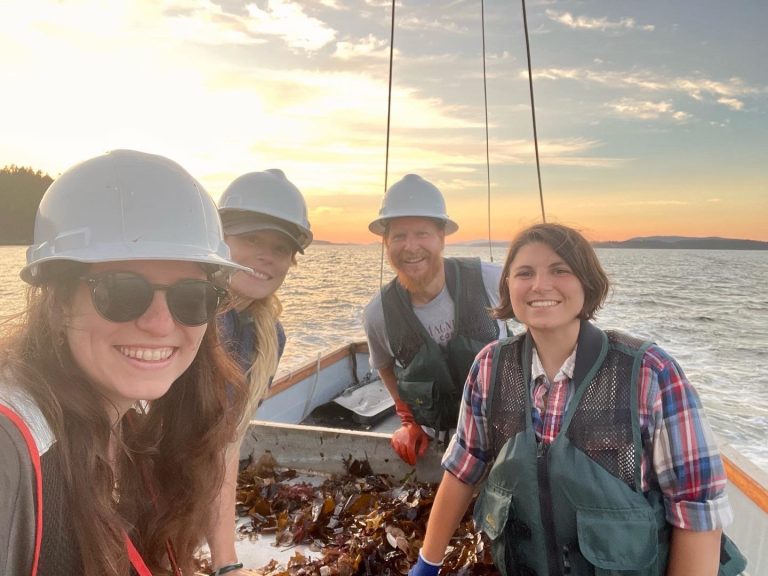
Dive into adventure at the Fraser Lab here.
Read more from the Fall/Winter 2023 issue of Ytori magazine.
